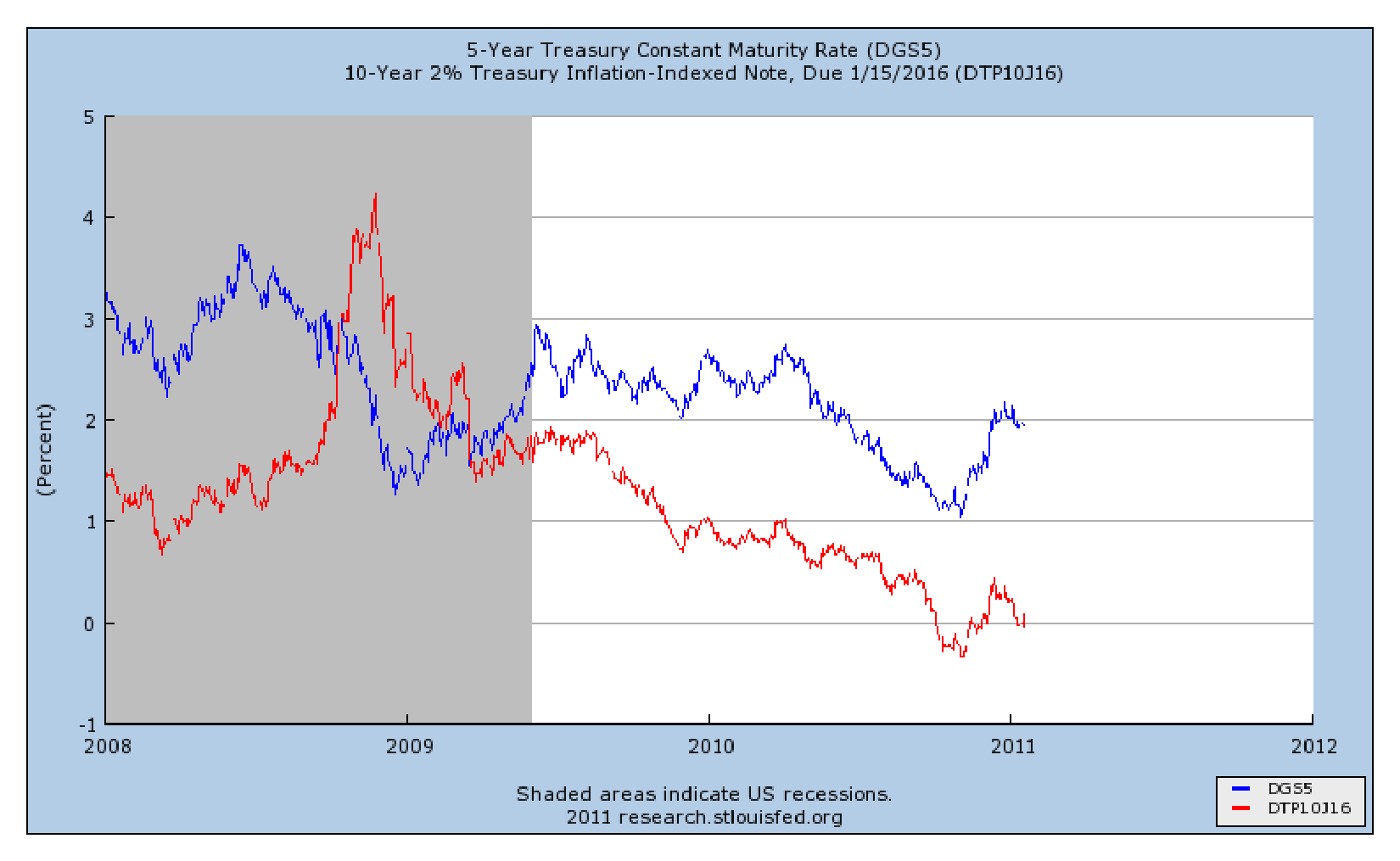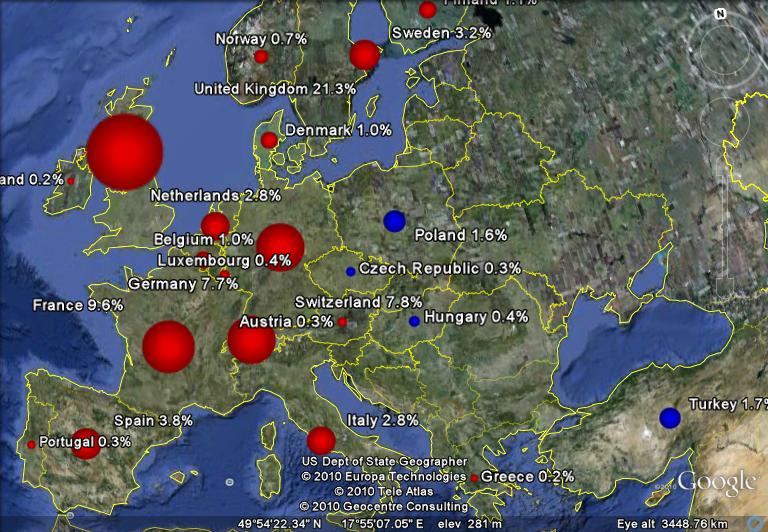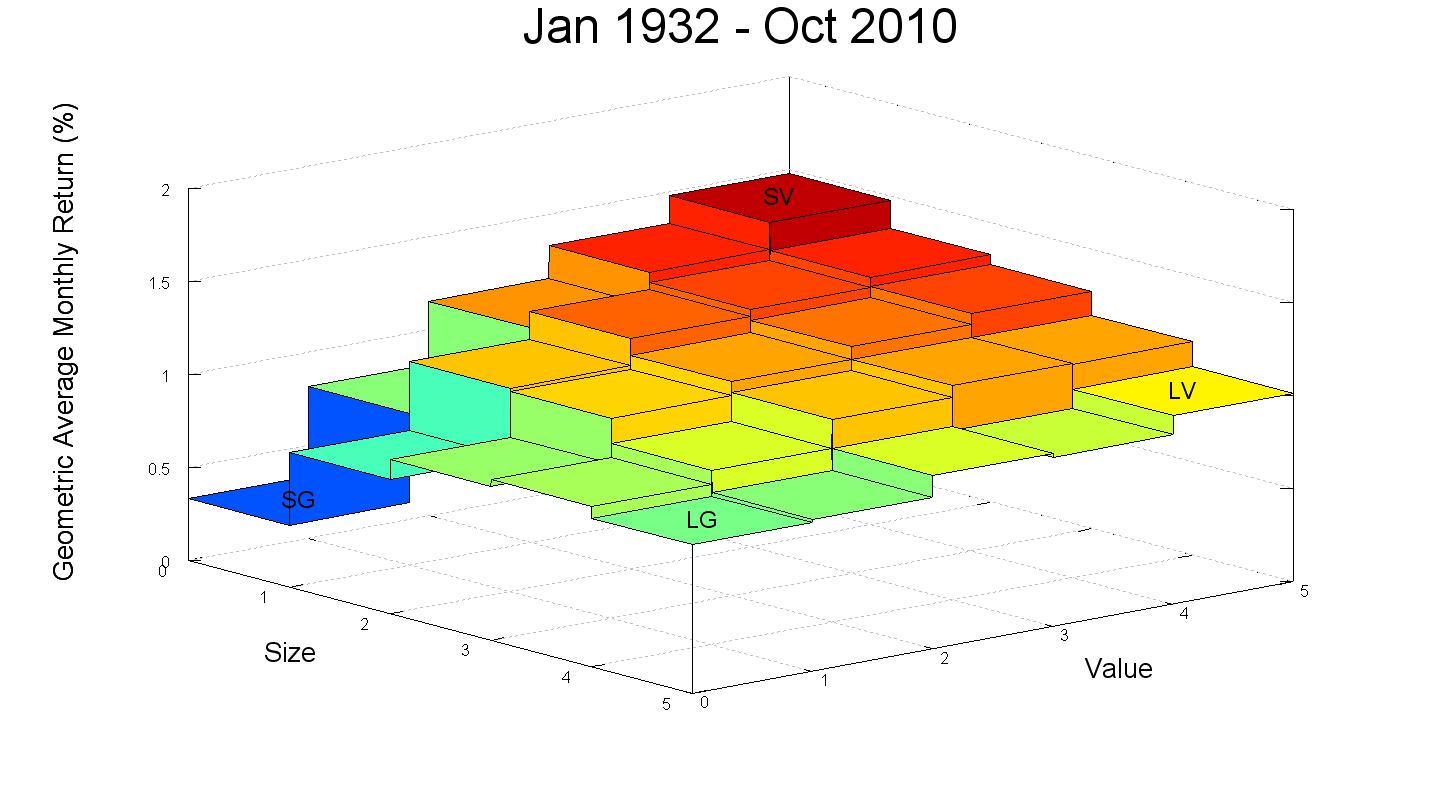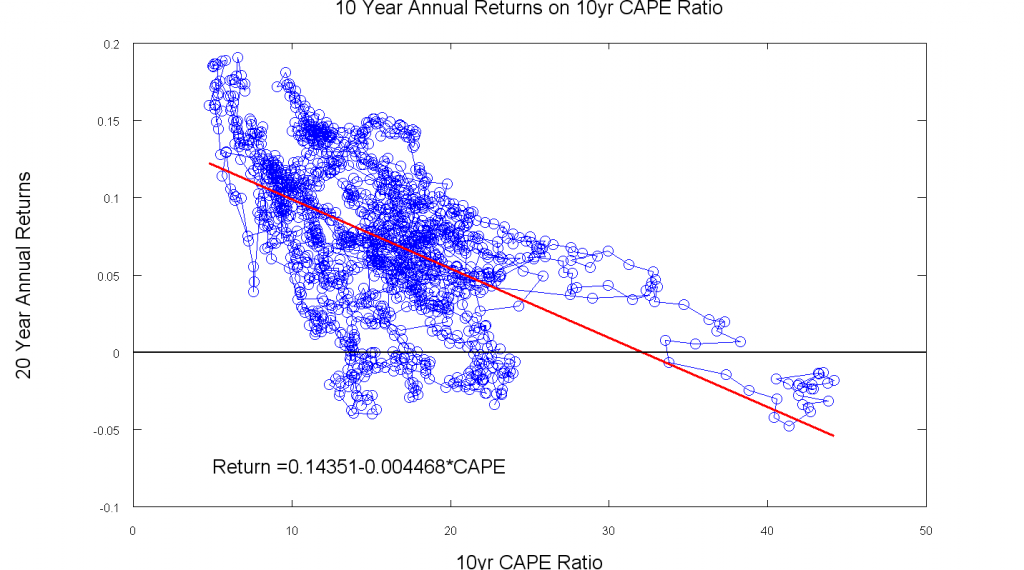How well can the small-value premium be captured using ETFs?
In a previous post, I plotted the returns of 25 portfolios which were formed by sorting stocks on both size and value characteristics. The data, from the Kenneth French website, showed a clear pattern of increasing returns as size decreased and value (measured by book-to-market ratio) increased. In other words, the small-value portfolio had outperformed the broader market over most periods of 20 years or more, and the margin of outperformance was often quite large.
Fama and French, who built the size and value effects into an asset pricing model, believe that the higher returns of small stocks and value stocks are related to the higher risks associated with holding these stocks. This may be true, and there is some persuasive evidence supporting the Fama-French viewpoint. However, another issue with capturing the small-value premium is cost. The returns of the Fama-French 25 portfolios do not include trading costs, fees, or taxes, and these costs are likely to be higher for investors who are trying to implement a small-value tilt in their personal portfolio.
In this post, I will evaluate several ETFs which track popular indexes and calculate how well these funds capture the theoretical returns predicted by the Fama-French model. In addition, I will place the factor loadings of these funds in the context of the Fama-French 25 portfolios. For example, does a fund which is described as a “small-value” fund really behave similarly to the most extreme small-value portfolio from the Fama-French 25 portfolios? If not, which of the portfolios does it approximate most closely?
The Fama-French regression equation is shown here:

Continue reading »




